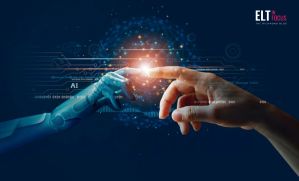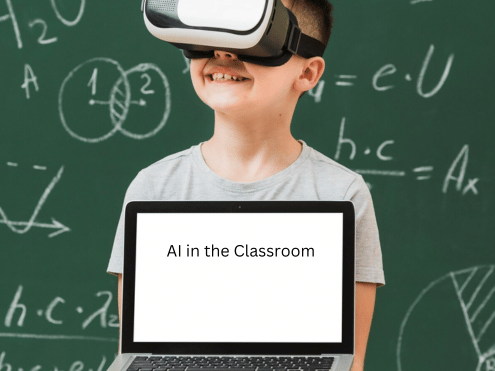Youth Eager to Learn, Systems Slow to Deliver
According to a recent Microsoft survey, 86% of education organisations now use generative AI. Adoption is rising fast, yet more than half of respondents admit they know little about AI. Translation tools help schools communicate with parents from a wide range of countries around the globe, and AI assistants help design curricula. But these successes mask a disconnect: educators often adopt AI to lighten workloads rather than rethink pedagogy, and students at elite schools benefit more than those with limited exposure. Unless we deliberately build AI literacy into education, these tools could widen existing inequalities.
Moreover, an estimated 450 million young people worldwide lack the skills needed for employment and further education. As automation and AI reshape the labour market, millions of jobs could be displaced. Young users see AI as a way to expand access to learning yet worry about digital inequality and a decline in critical thinking. UNESCO’s World Youth Skills Day report urges modernising curricula and strengthening career guidance. In short, AI literacy is a workforce issue as much as an educational one.
Actionable Tips:
- Link AI tasks directly to real-world skills. For example, have students draft an email with AI, then critique and improve it together to develop both language competence and workplace awareness.
- Begin each AI-related lesson with a short “What this tool is and isn’t” overview. Show one practical use (e.g., summarising a text) and one limitation (e.g., hallucinated facts) to build critical awareness.
Navigating a Crowded Framework Landscape
International organisations have been delivering roadmaps for AI integrations even before all the hype, yet not loudly enough. UNESCO’s AI Competency Framework sets out 12 competencies across human-centred mindset, ethics, AI techniques, and system design. It emphasises critical judgement, citizenship responsibilities, and inclusive design. UNESCO reports that by 2022, only about 15 countries worldwide had formally included AI learning objectives in their national curricula, and just seven had developed AI frameworks or programmes for teachers, highlighting uneven progress.
The AILit Framework from the European Commission and OECD builds on UNESCO’s work. Aligned with the EU AI Act, it calls for a shared understanding of AI literacy and positions it as a requirement for providers and deployers.
UNESCO’s Guidance for Generative AI in Education and Research adds a note of caution: generative tools are evolving faster than regulation, so governments must safeguard data privacy and verify tools’ ethical and pedagogical suitability. Together, these frameworks show both the enthusiasm and the urgency of turning AI literacy into practical classroom skills.
Actionable Tip:
- Use these frameworks as checklists for lesson design. Pick one competency (e.g., bias detection) and embed it into a weekly activity, such as comparing two AI-generated translations or AI-generated pictures for subtle differences.
Future-Proofing the Workforce
AI literacy is now a workplace survival skill. The World Economic Forum notes that 44% of core skills needed for work will change in the next five years. Employers are already moving: German engineering firms run internal “AI academies,” and Singapore funds programs pairing graduates with AI mentors.
Yet schools and universities still teach digital skills as optional modules, while employers expect workers who can confidently prompt AI systems, assess bias, and combine technical know-how with communication skills. That gap explains why many companies are building their own training pipelines, but it also raises questions about equity.
As AI automates routine tasks, the premium on human-centred skills grows: leadership, empathy, negotiation, and cross-cultural communication. Imagine a business English learner in Madrid preparing for a promotion. Their manager wants them to manage AI-generated reports, detect flawed translations, and guide colleagues through cross-border negotiations. These are hybrid skills: part language, part technology, part judgement.
Actionable Tip:
- Integrate “AI + soft skills” tasks. Ask students to role-play workplace scenarios where they must challenge an AI output diplomatically, training both language and critical thinking.
Lessons for ESL Educators
Future-proofing the workforce begins long before hiring. Language classrooms train the hybrid skills—technical, communicative and ethical—that tomorrow’s jobs demand. When ESL educators integrate AI purposefully, they not only improve English proficiency but also build students’ critical thinking, adaptability and digital literacies.
AI tools can support this. Beyond translation, they provide real-time pronunciation feedback, personalised reading lists and adaptive writing prompts. These platforms broaden practice and strengthen independent learning, but biases in large language models can still distort cultural nuances. ESL educators should model responsible use, teach students to evaluate AI outputs critically and choose tools that protect privacy and linguistic diversity.
Tools like ChatGPT or Gemini can speed lesson planning but cannot replace pedagogical judgement. The AILit framework reminds us that AI literacy includes knowledge, skills, attitudes and ethics. For ESL educators, this means understanding how AI systems are trained, being aware of privacy and intellectual property issues and designing learning experiences that integrate AI without replacing authentic communication.
Actionable Tips:
- Blend AI with human interaction: Pair AI-generated exercises (pronunciation, writing prompts) with live discussions or role-plays to build language fluency and workplace soft skills.
- Create a “translation ladder”: Start with AI-assisted translation, then reduce reliance by asking students to produce their own phrasing.
- Practice AI critique: Have students fact-check or culturally adapt AI-generated texts, discussing bias and tone as part of language learning.
- Use AI for at-home practice but reserve class time for spontaneous speaking: This keeps communication authentic and decision-making real.
A Call to Reflection
The pace of AI adoption in education is dynamic and fluid. We must confront the gaps: millions of young people lack digital and AI skills, educators and students struggle to understand the tools they use, and regulatory frameworks fall behind technology. International organisations provide roadmaps, UNESCO’s competency framework, the EU/OECD’s AILit framework, and UNESCO’s generative AI guidance, but these only succeed if educators and learners engage critically.
For ESL educators, AI can be a catalyst for creativity and inclusion, but only if we use it thoughtfully. We need to question outputs, examine biases, and use AI to amplify, not replace, student voices. The age of AI calls us to build community, foster curiosity, and equip learners with the literacies they need to participate in a rapidly changing world.
Actionable Tip:
- Close lessons with a “What did AI miss?” and “What did AI improved?” reflection round. Students identify at least one positive or negative aspect in the AI-generated material they used that day. This keeps curiosity and critical thinking alive.
References
- Microsoft Special Report on AI in Education (2025).
- UNESCO, World Youth Skills Day Survey Report 2025.
- Ministry of Education and Sports (2025), AI Competency Framework for Students.
- EU/OECD, AILit Framework Review Draft (2025).
- UNESCO, Guidance for Generative AI in Education and Research.
- World Economic Forum, Future of Jobs: Valuable Skills.
- World Economic Forum, Chief People Officers Outlook 2025.









